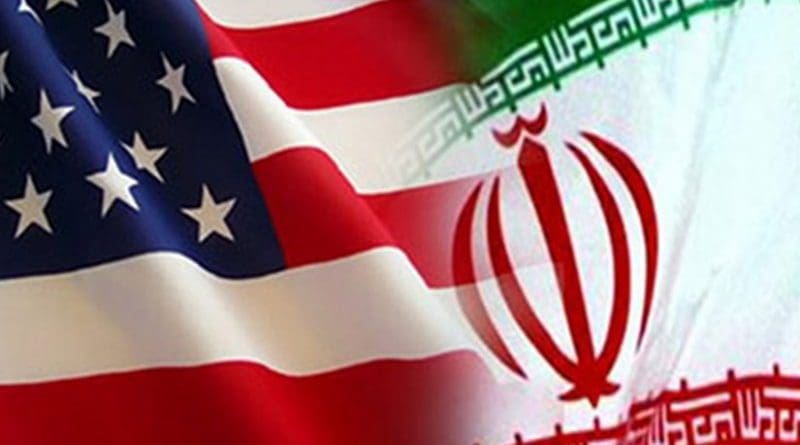Iran’s Goals Behind Show Of Missile Power – OpEd
By Iran Review
By Hossein Bozorgmanesh*
As the time to begin the implementation of Iran’s nuclear deal clinched in Vienna was drawing near and the Islamic Republic as well as six world powers were getting ready to put the deal into gears, Iran’s Defense Minister Hossein Dehqan announced on October 11 that the country has test-fired its new long-range missile, called Emad. Following the announcement, Iranian news agencies published photos and videos depicting the test firing of the Emad long-range missile. According to Iranian defense minister, the new missile is the first long-range missile developed by the Islamic Republic of Iran, which can be guided and controlled up to the moment it hits the target and is also capable of striking and totally destroying its targets with pinpoint accuracy.
Since the United Nations Security Council Resolution 2231, especially Paragraph 3 of its Annex B, has banned Iran from designing and testing any kind of ballistic missiles capable of carrying a nuclear warhead for a period of eight years, Iran’s missile test elicited reaction of American officials. For example, Mark Toner, the US Department of State spokesman, described Iran’s missile test as violation of the aforesaid Security Council resolution, which restricts Iran’s missile activities, and announced that Washington reserves the right to show a proportional reaction to Iran’s violation of the Security Council resolution. Also, Samantha Power, the United States’ permanent representative at the United Nations, said Iran’s measure was blatant violation of the Security Council Resolution 2231, claiming that the Iranian missile is capable of carrying nuclear warhead and that the United States is preparing a report on the test fire of the Emad missile to be submitted to the sanctions committee of the UN Security Council.
The measures taken by the Islamic Revolution Guards Corps (IRGC) did not remain limited to testing the Emad missile. On October 14, Iran’s state-run television aired an exclusive footage of the IRGC’s missile bases deep underground, thus flaunting Iran’s missile capabilities one more time. The main motives, which may have prompted Iran to test the Emad missile and show its missile centers at the depth of a mountainous region can be enumerated as follows:
1. In view of the sanctions imposed by the United States on Iran, the Iranian Air Force is currently facing many problems for purchasing new warplanes and procuring spare parts for the existing jets as a result of which its ability to conduct offensive operations against positions of regional and transregional rival countries is quite limited. However, due to Iran’s self-sufficiency in designing, stockpiling and maintaining short- and medium-range missiles, the country’s missile units are much more efficient for conducting offensive operations against Iran’s enemies compared to ageing and limited fighter jets that are operated by the Air Force. In fact, one can claim that the IRGC’s ballistic missiles form the spine of Iran’s deterrence power and are considered a strategic tool to target key installations of regional and transregional rivals of Iran in the event of a possible military conflict. In view of the extraordinary ability of Iran’s missiles as a deterrent factor, Iranian officials are by no means willing to negotiate and reach a reconciliation with the West over the country’s missile power.
2. By testing more accurate and far-reaching missiles, Iran is trying to send this message to the United States that despite tough sanctions that have been imposed on its missile program, domestic specialists in Iran are able to upgrade and boost the country’s missile capabilities, thus, proving that sanctions imposed by the United States and the UN Security Council have had no practical effect on the missile capability of the Islamic Republic.
3. The Iranian government has no plan to leave management of its missile program to the United States. Iran has already succeeded through resistance and paying a hefty economic price to force the United States to accept its right to enrich uranium and maintain its nuclear know-how while having the initiative in managing its nuclear program. Also in Syria, despite unbridled support provided to groups opposing the Syrian government by the United States and its allies, Iran is still trying to manage the Syrian crisis and has been mostly successful in this regard despite all the problems it has faced and in doing so, it has prevented the fall of Syria’s capital city, which is of key and symbolic importance.
4. In view of the United States’ threatening rhetoric against Iran, which revolves around military option against Iran being on the table, the IRGC is showing off its missile power in the form of a powerful psychological warfare.
Given all the above facts, Iran is expected to not only conduct more missile tests and stage more extensive military drills in the future, but also put a special focus on space technology. By implementing its dual policy, Iran can not only be present in space and protect the country’s interests in commercial areas, but also boost its missile and deterrence power.
*Hossein Bozorgmanesh
Expert on Middle East Issues

